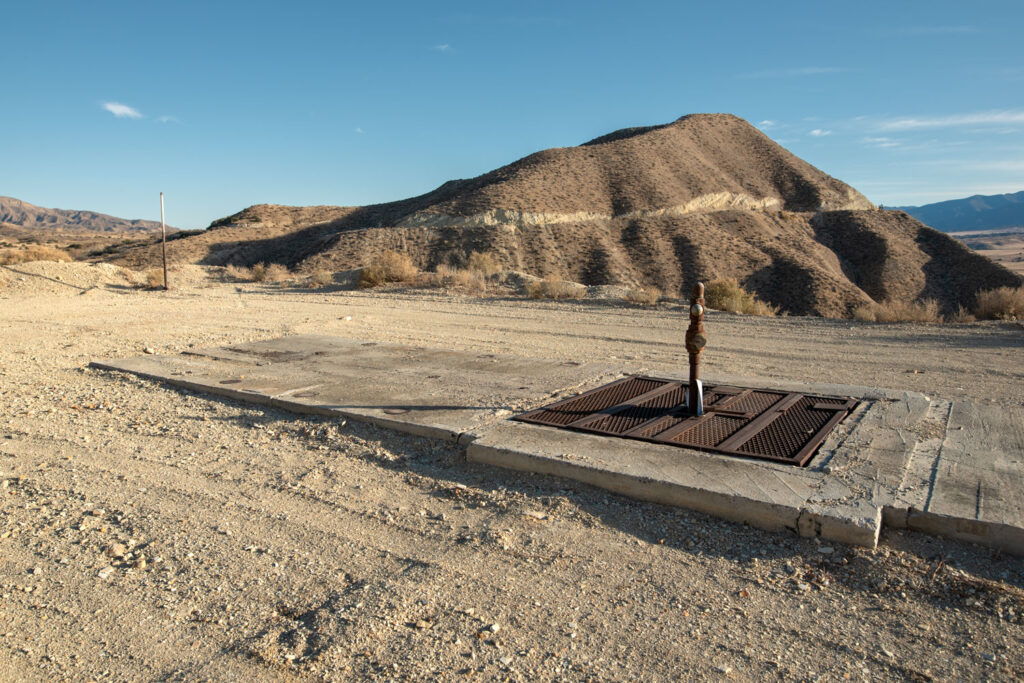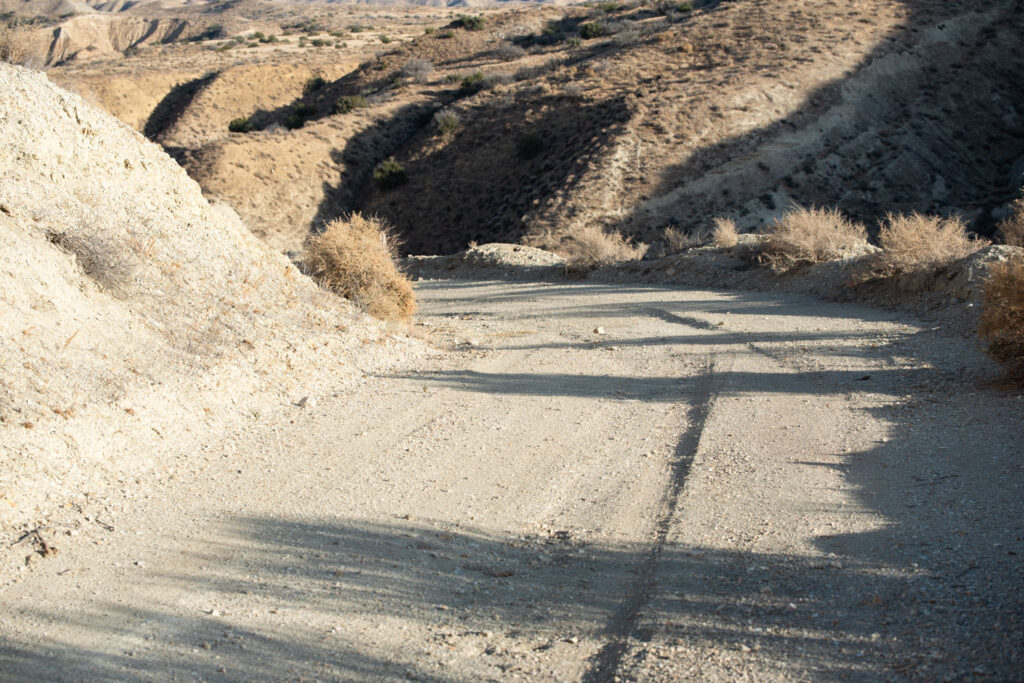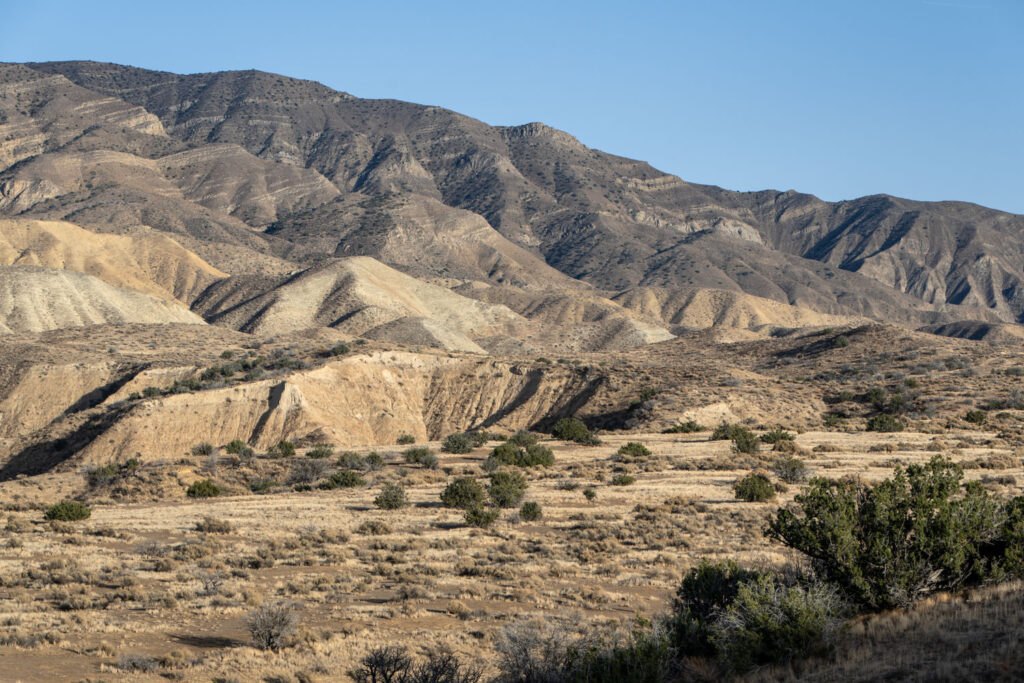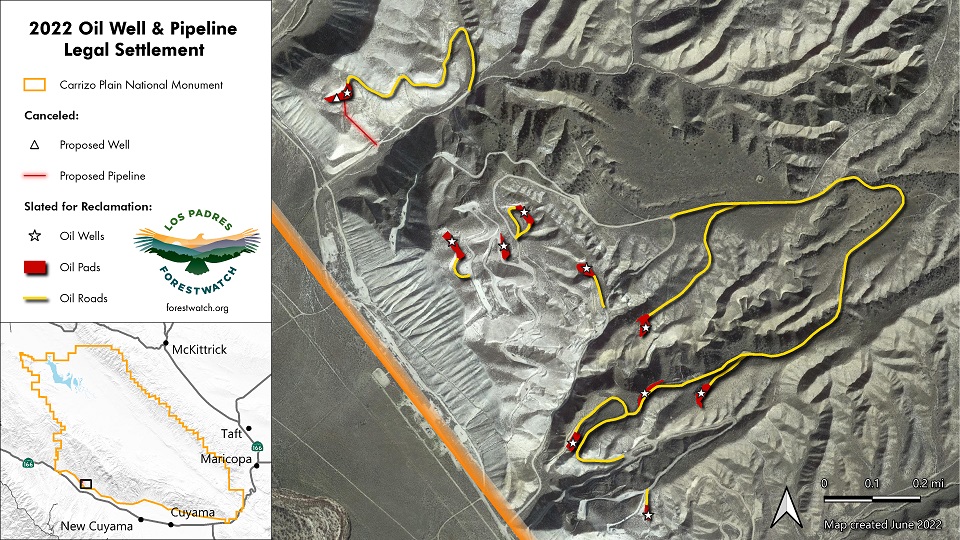
The Bureau of Land Management late Wednesday ordered an oil company to permanently close and remove 11 long-dormant oil wells inside the Carrizo Plain National Monument, a unique landscape in central California famous for its vibrant springtime wildflower displays and rare wildlife.
The order was part of a legal agreement signed by the BLM and conservation groups one year ago. The agreement resolved a 2020 lawsuit challenging the Trump administration’s approval of a new oil well and pipeline in the national monument.
“This order is a giant step toward restoring the landscape in Carrizo Plain National Monument,” said ForestWatch Executive Director Jeff Kuyper. “It forges a new era of conservation for this treasured place and will protect wildlife, nearby communities, and our climate from ongoing pollution. We hope the work is completed as soon as possible.”
The order requires the oil company, E&B Natural Resources of Bakersfield, to plug and abandon 11 oil wells that have not produced oil in decades. It also calls for reclamation of the oil pads and more than three miles of access roads, returning those areas to natural conditions, as well as removing pipelines, powerlines and other infrastructure. The work must be completed by 2028.
“This is a place for wildflowers, California condors and kit foxes, not oil wells,” said Ileene Anderson, a senior scientist at the Center for Biological Diversity. “It’s wonderful to see the fossil fuel era coming to an end here, which will benefit all the rare plants and animals of this stunning landscape. Now we need to phaseout fossil fuel extraction throughout California and the country to have any hope of leaving a livable planet for future generations.”

In 2020 Los Padres ForestWatch and the Center for Biological Diversity sued the BLM after the agency approved a permit for a new well and pipeline.
The lawsuit said the proposed fossil fuel extraction would harm threatened and endangered wildlife and mar scenic views, violating the monument’s resource-management plan, the Federal Land Policy and Management Act and the National Environmental Policy Act. It was the first new oil well approved in Carrizo Plain National Monument since it was established in 2001.
The lawsuit also said the BLM had failed to protect monument resources in managing oil drilling in the national monument, including promptly capping and remediating old wells and facilities that have not produced oil in decades.
The well sites are in the Caliente Mountains inside the western boundary of Carrizo Plain National Monument. The area is home to several protected species, including threatened San Joaquin antelope squirrels, endangered San Joaquin kit foxes, and an endangered flowering plant called the Kern mallow.
About the Carrizo Plain
The Carrizo Plain National Monument is a vast expanse of golden grasslands and stark ridges known for their springtime wildflower displays. Often referred to as “California’s Serengeti,” it is one of the last undeveloped remnants of the southern San Joaquin Valley ecosystem.
The Carrizo Plain is critical for the long-term conservation of this dwindling ecosystem. It links these lands to other high-value habitat areas like the Los Padres National Forest, Salinas Valley, Cuyama Valley, and Bitter Creek National Wildlife Refuge in western Kern County.
Honoring the area’s high biodiversity, limited human impacts and rare geological and cultural features, President Clinton declared the Carrizo Plain a national monument in 2001. It includes more than 206,000 acres of public lands ― perhaps the largest native grassland remaining in all of California.









Comments are closed.